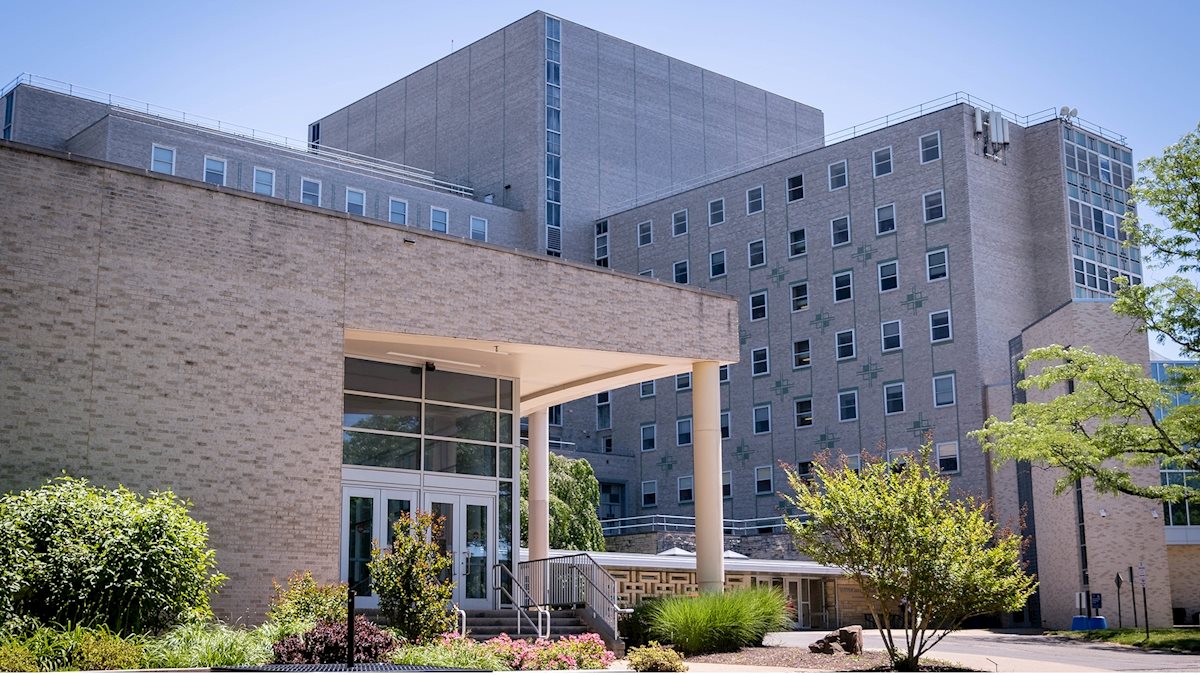WVU researchers explore how photoreceptor proteins protect against retinal degeneration

Since arriving on the West Virginia University School of Medicine Campus as a first-year graduate student in 2019, Alexis Crockett has been exploring the role of proteins located within retinal photoreceptor cells and their relationship to devastating blinding diseases.
Crockett is a sixth-year graduate student in the Department of Neuroscience Graduate Program, training in the lab of Visvanathan Ramamurthy, Ph.D., professor and chair for the Department of Biochemistry and Molecular Medicine and professor for the Department of Ophthalmology and Visual Sciences.
Under the guidance of Dr. Ramamurthy, Crockett has spent the last several years leading a research project aimed at better understanding the role of a specific protein, ARL13B, that is located within the cilia of light-detecting retinal photoreceptors.
“Cilia are specialized hairlike structures found on the surface of most cells,” she explained. “A protein called ARL13B localizes in the light-sensing cilia of retinal photoreceptors known as outer segments, which play an essential role in the visual process. Our research focused on determining how the presence of this protein within the photoreceptor cilia functions in normal vision.”
Crockett explained that human mutations in ARL13B are known to cause Joubert syndrome, a rare genetic disorder that affects the brain and causes a range of neurological issues as well as blindness. To further explore the relationship between this protein and devastating diseases like Joubert syndrome, Crockett and a team of researchers implemented a laboratory model that prevented ARL13B from entering the cilia and studied how this change affected vision.
Under the guidance of Dr. Ramamurthy, the experiments were planned and conducted by Crockett, who also performed data analysis, interpreted results, created visual figures for the data and wrote about her findings. The project was supported by a diverse team of WVU researchers, including faculty, laboratory technicians, undergraduate students, and other graduate students.
The project was financially supported by grants from the National Institutes of Health, Research to Prevent Blindness, the Visual Sciences Center of Biomedical Research Excellence, the US National Science Foundation and the Lions Club.
“Through this research, we discovered that when ARL13B is excluded from cilia, there is an early decline in cone photoreceptor function, which is needed for bright light and color vision,” Crockett explained. “Additionally, photoreceptor morphology is disrupted, photoreceptors accumulate proteins abnormally, and ultimately degenerate, leading to loss of vision. These findings demonstrate that this protein’s presence in outer segment cilia is essential for maintaining photoreceptor structure and function, and provide crucial insight into how vision loss, and particularly cone loss, can be caused by Joubert syndrome and other similar genetic disorders.”
After several years of collaboration and hard work, Crockett was able to share these findings with the community at large when her research article on this study was accepted for publication in the August 20, 2025, edition of the Journal of Neuroscience.
“Getting this work published in a storied academic journal like the Journal of Neuroscience is an incredible personal milestone for me. I’ve been steadily working toward this goal since I began this project when I joined Dr. Ramamurthy’s lab in 2019, and I am proud to finally be able to share these results with the scientific community,” she said.
Crockett added that she would not have been able to achieve this goal without the supportive and collaborative team of faculty, staff and student researchers at the School of Medicine.
“This project, and ultimately our publication in the Journal of Neuroscience, would not have been possible without the collaborative and supportive environment that is fostered at WVU,” she said. “I am grateful for the opportunities I’ve had to work alongside and learn from Dr. Ramamurthy and to serve as a mentor to some of the brilliant, young aspiring scientists enrolled in WVU’s undergraduate programs.”
To learn more about vision research at the WVU School of Medicine, visit medicine.hsc.wvu.edu/eye/research.